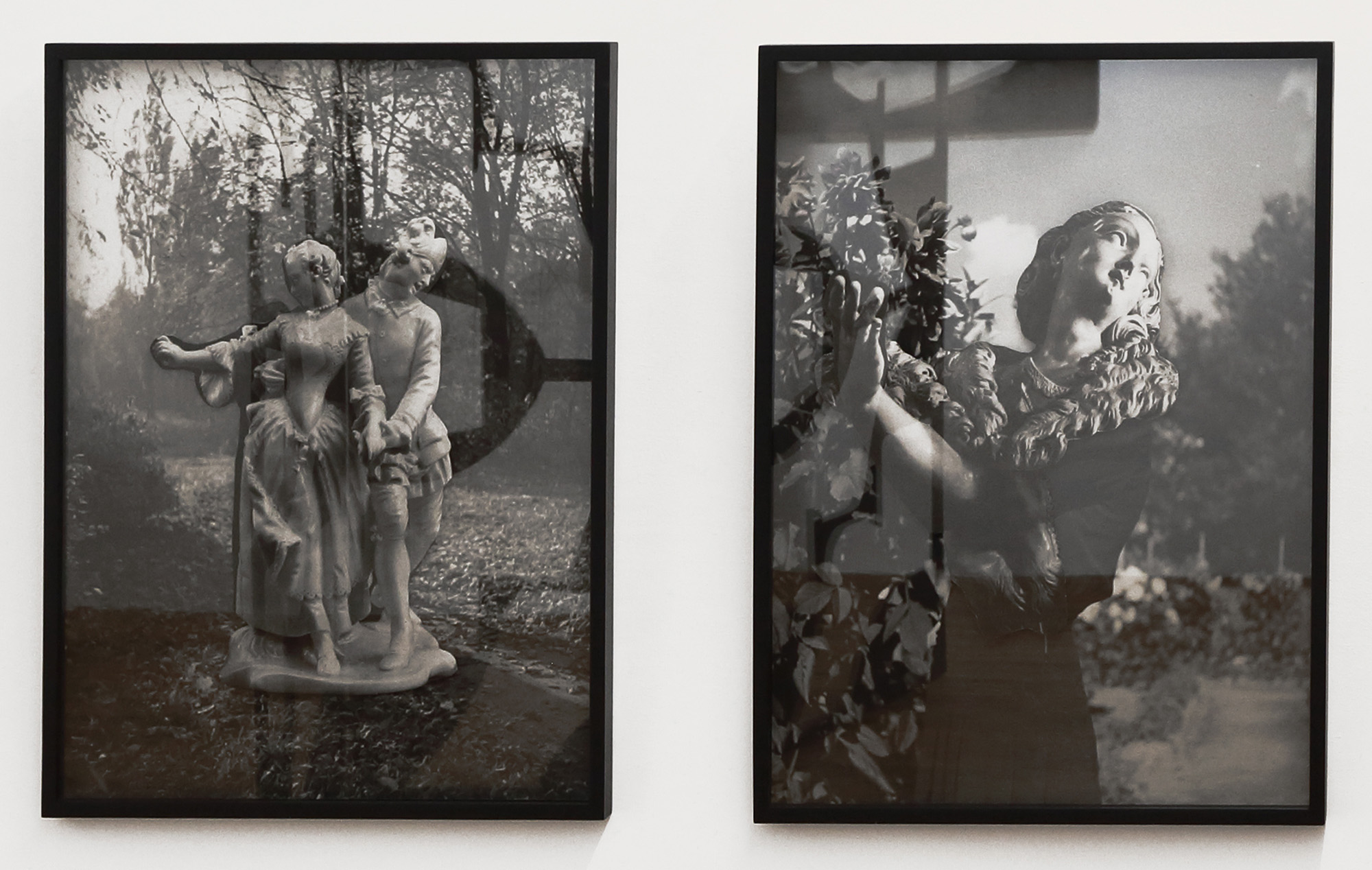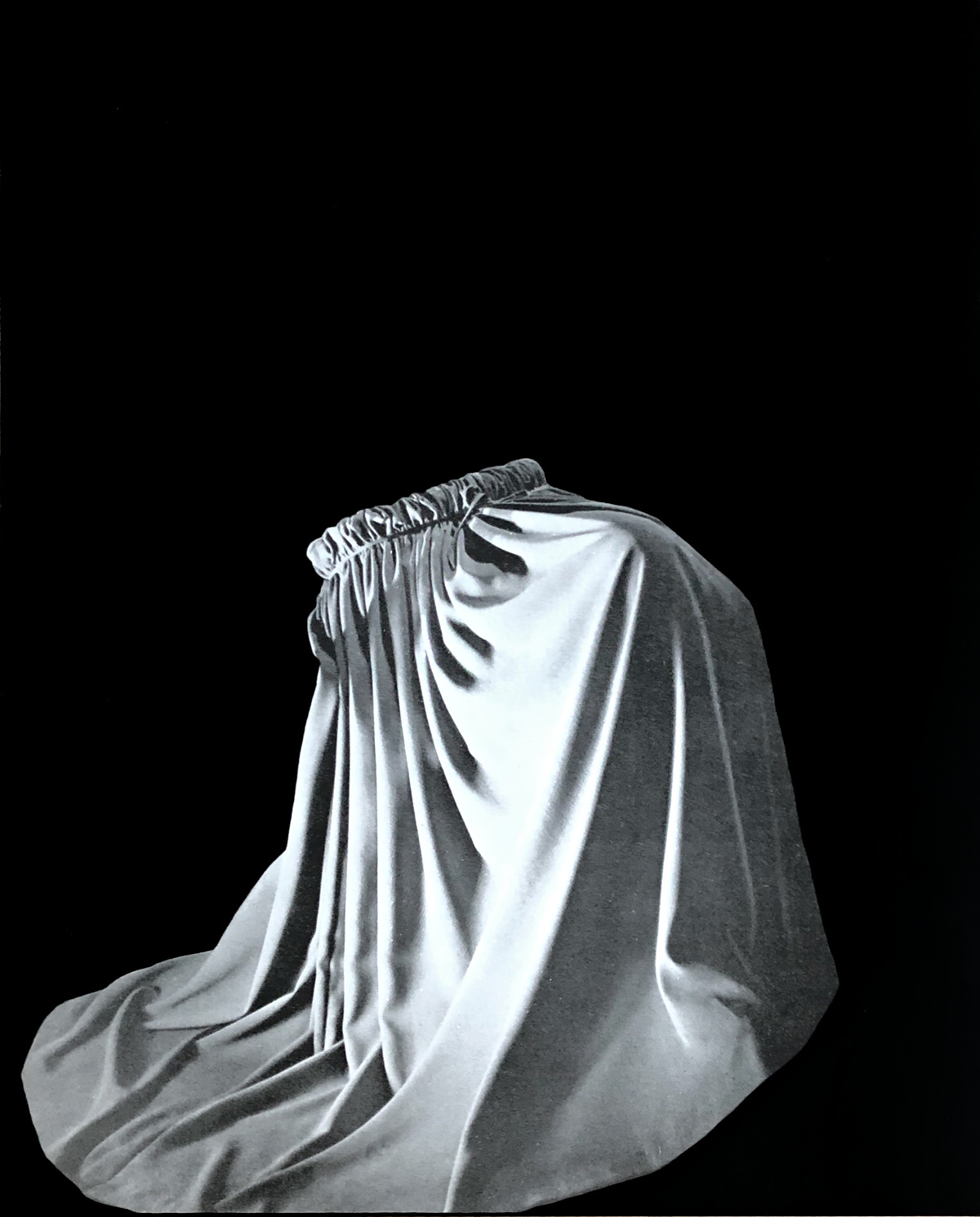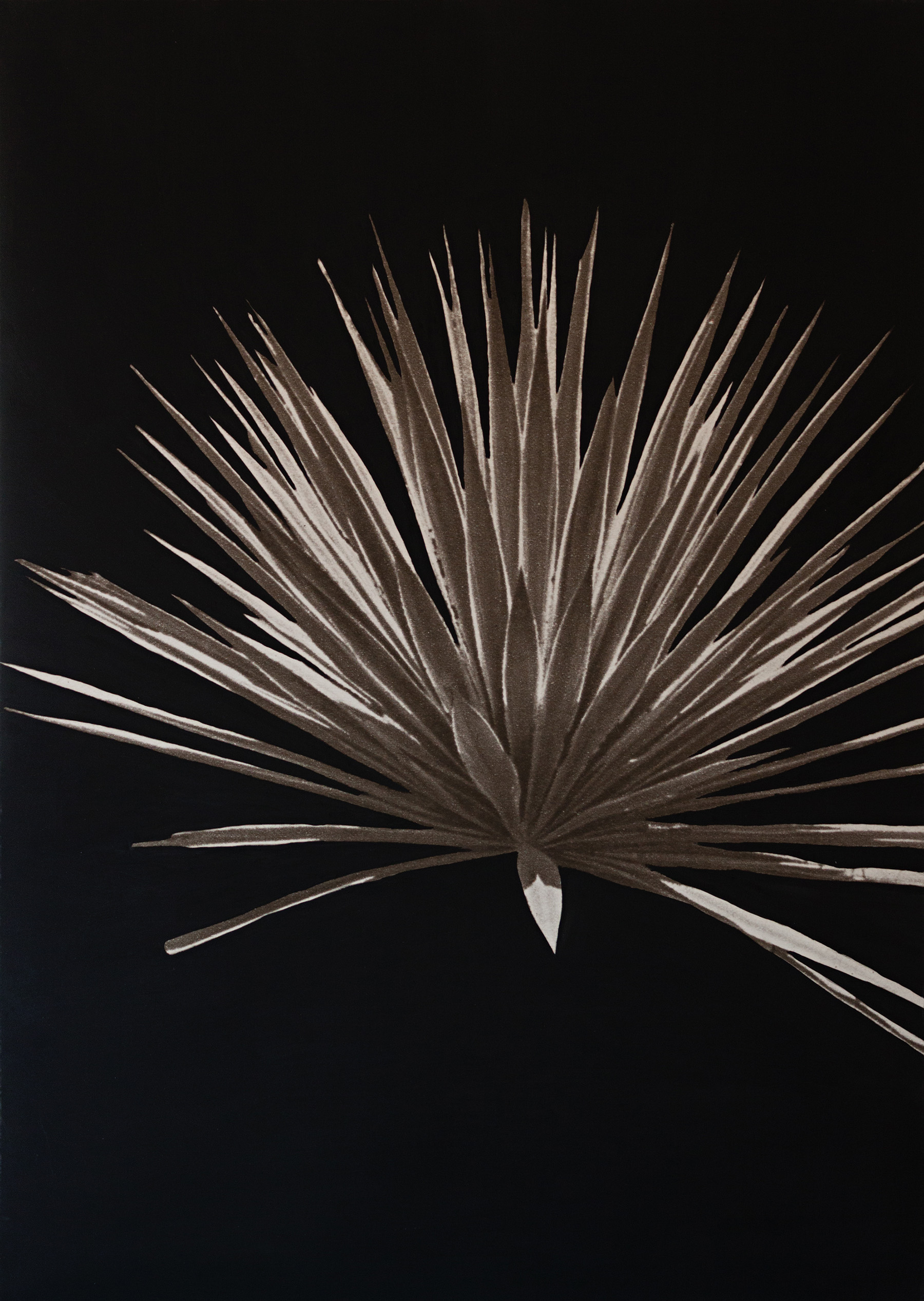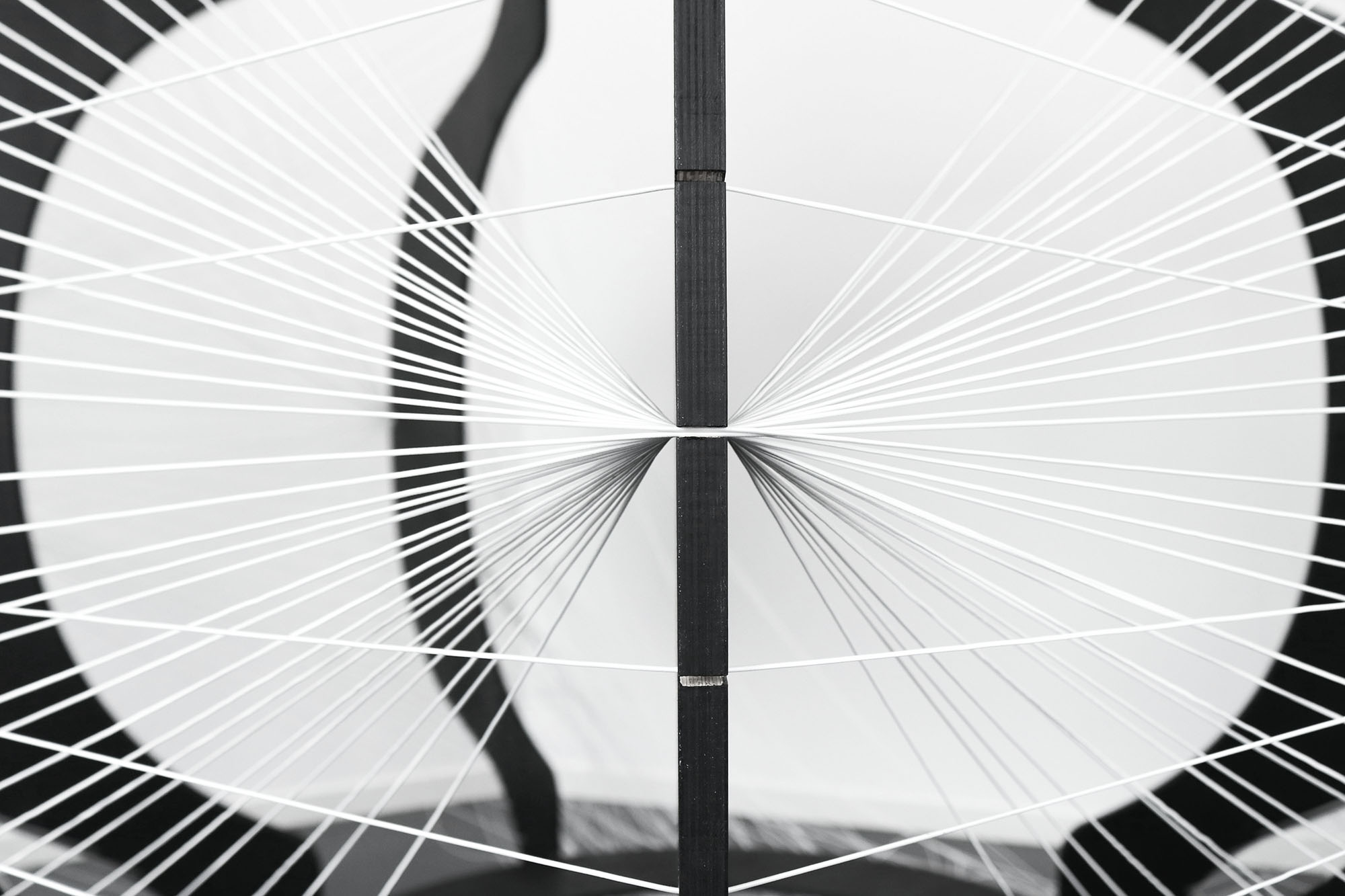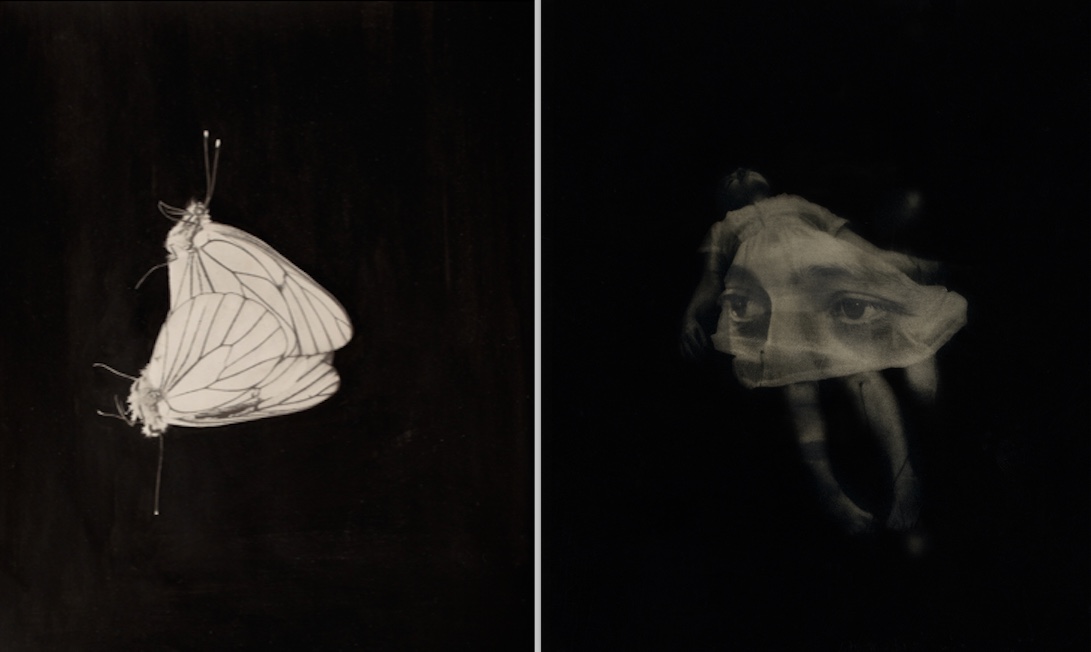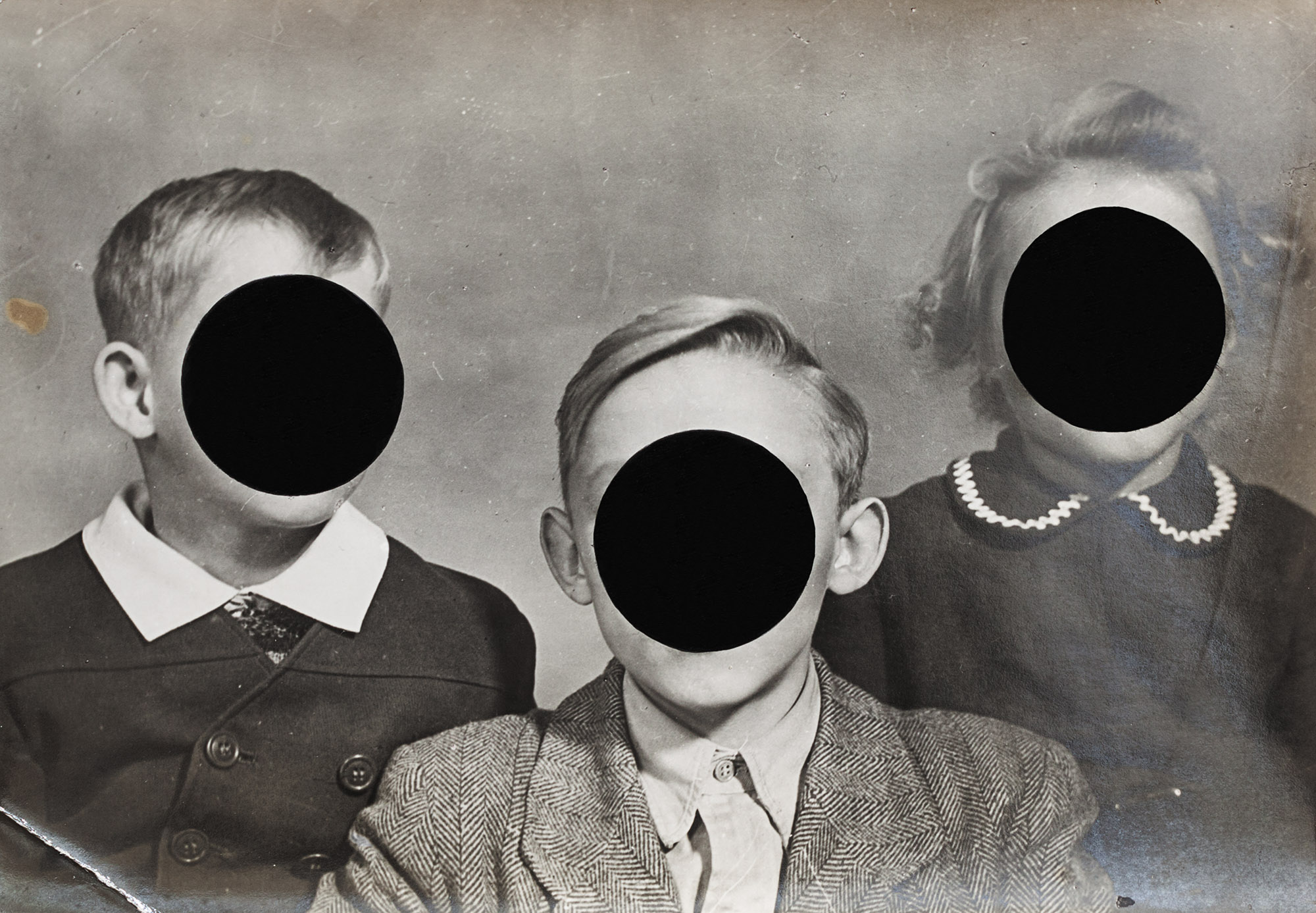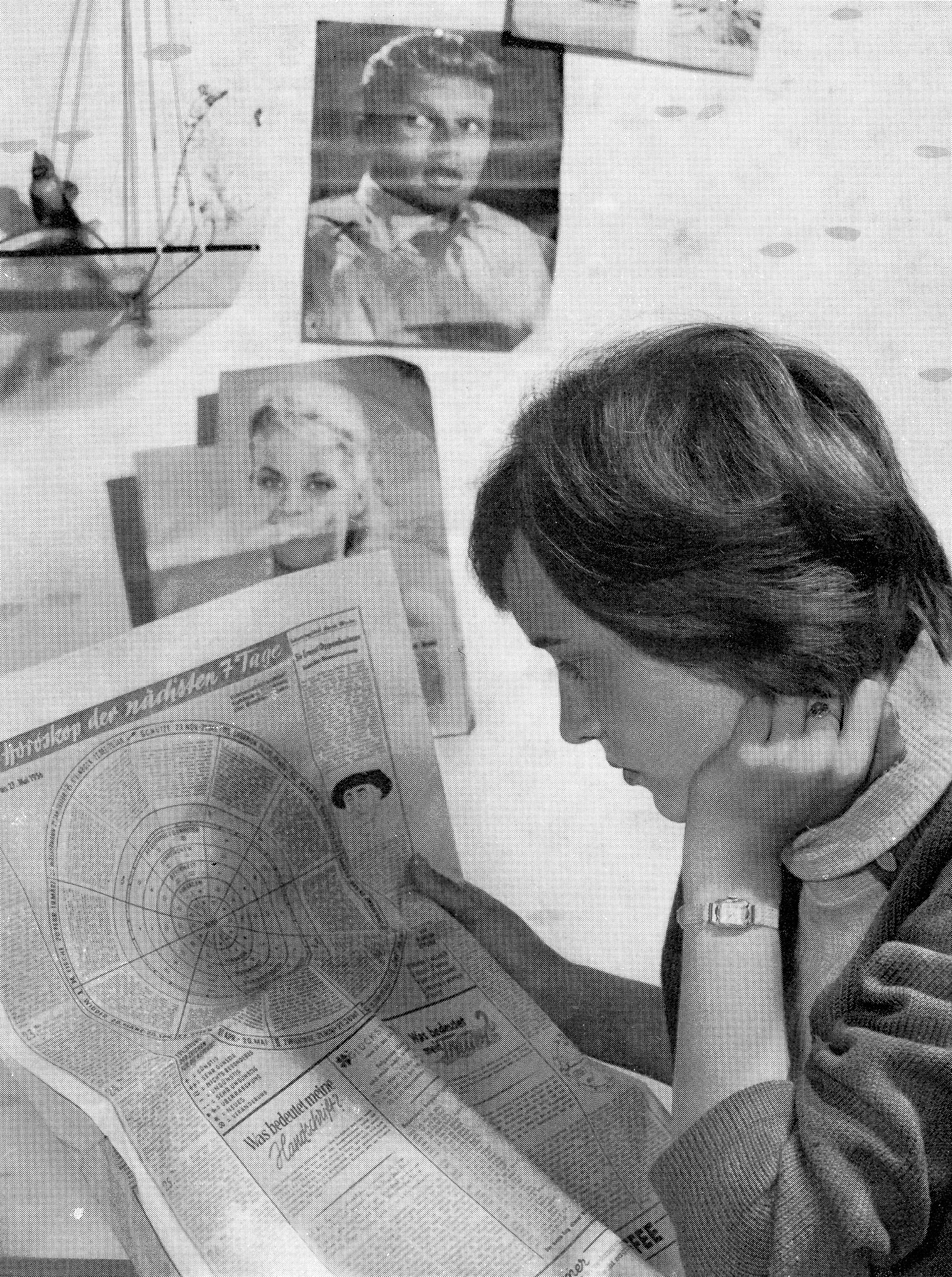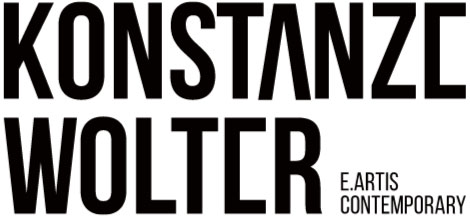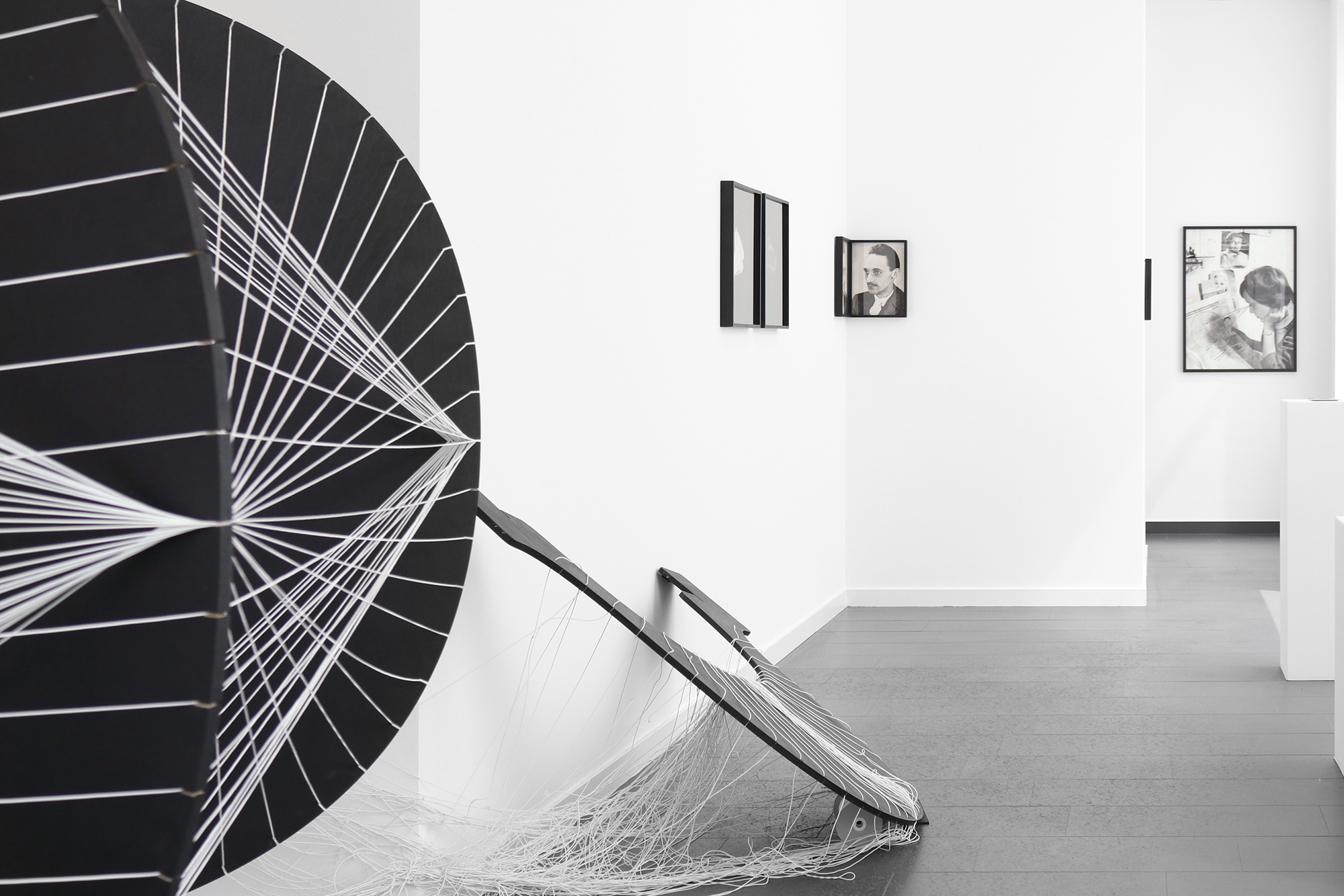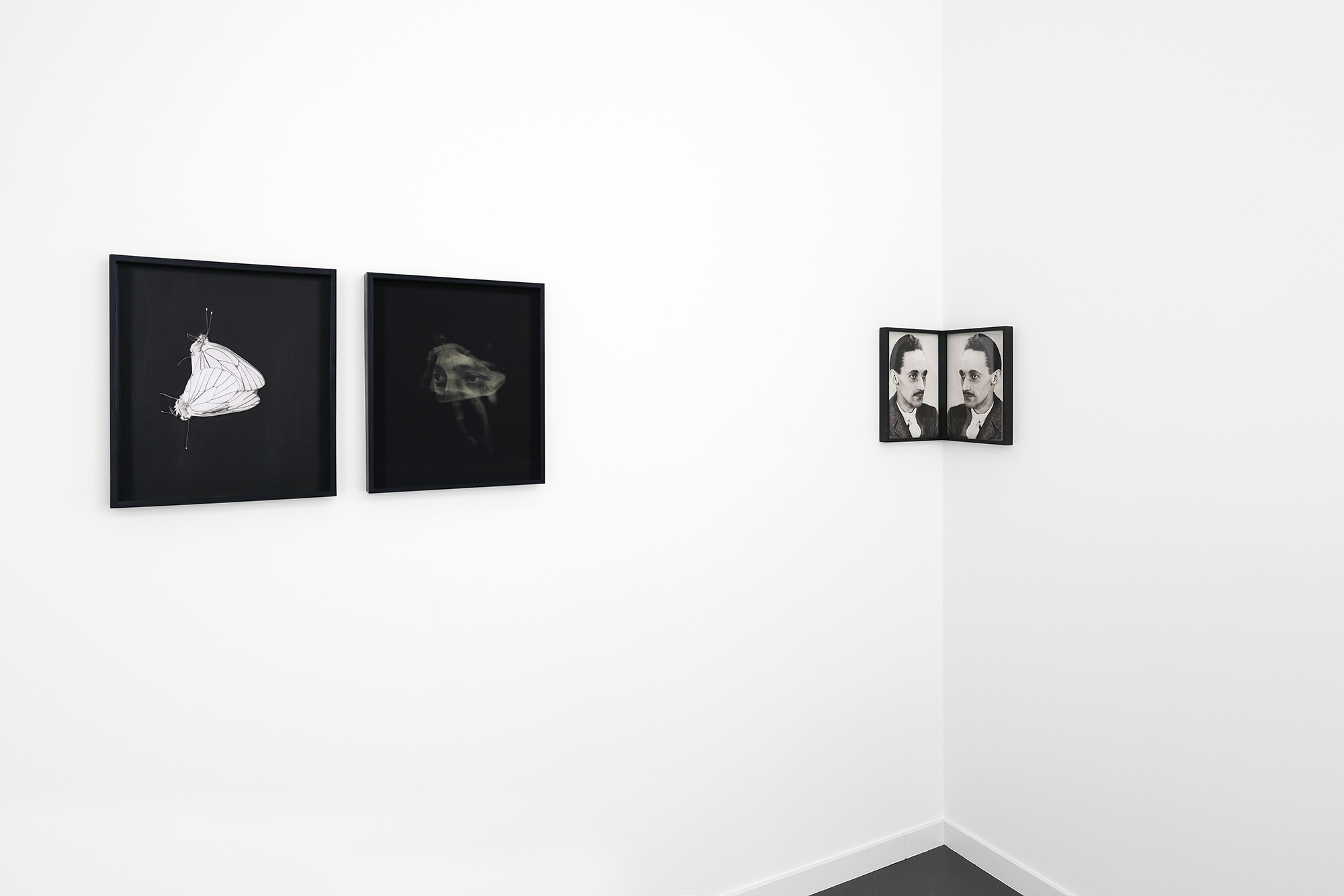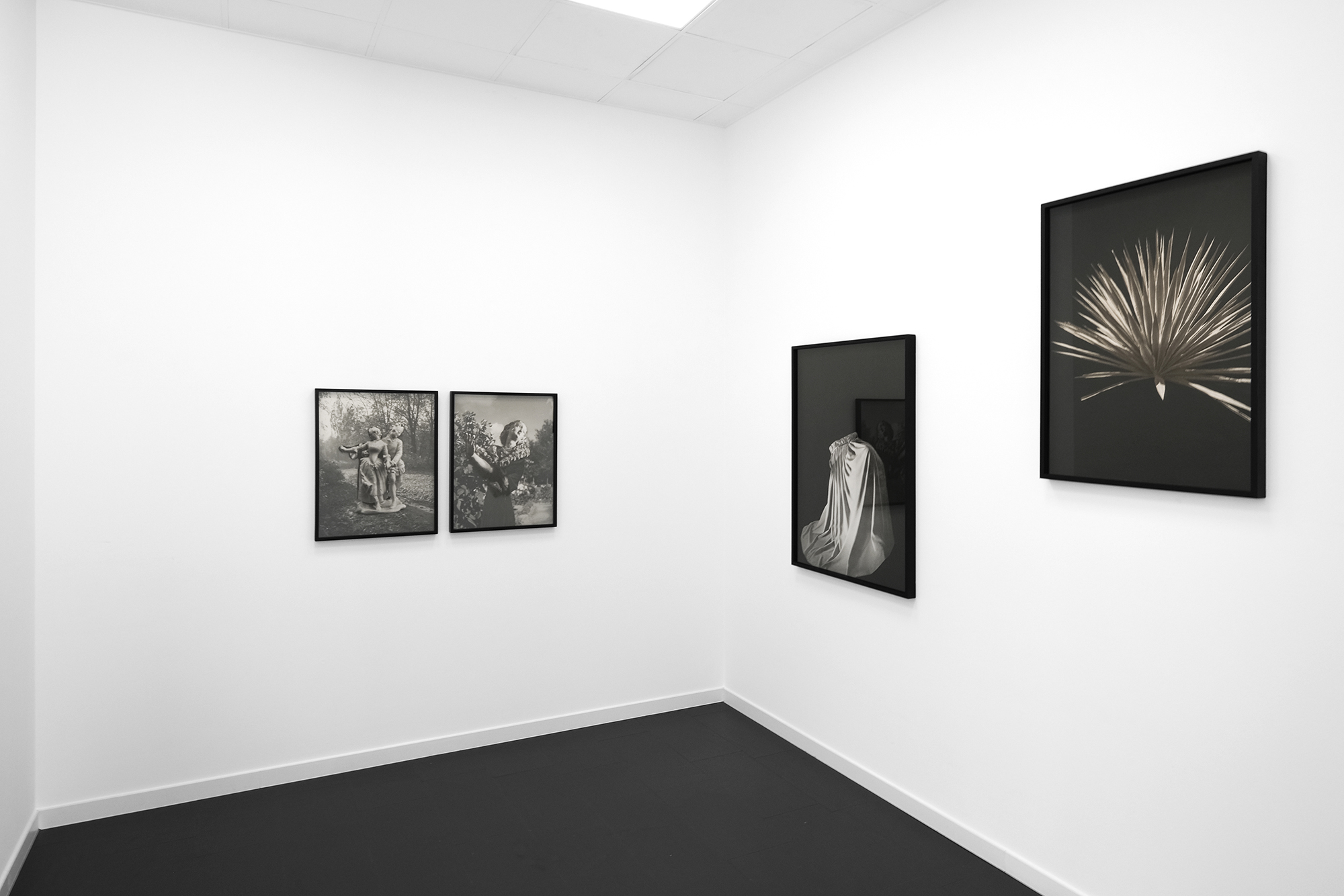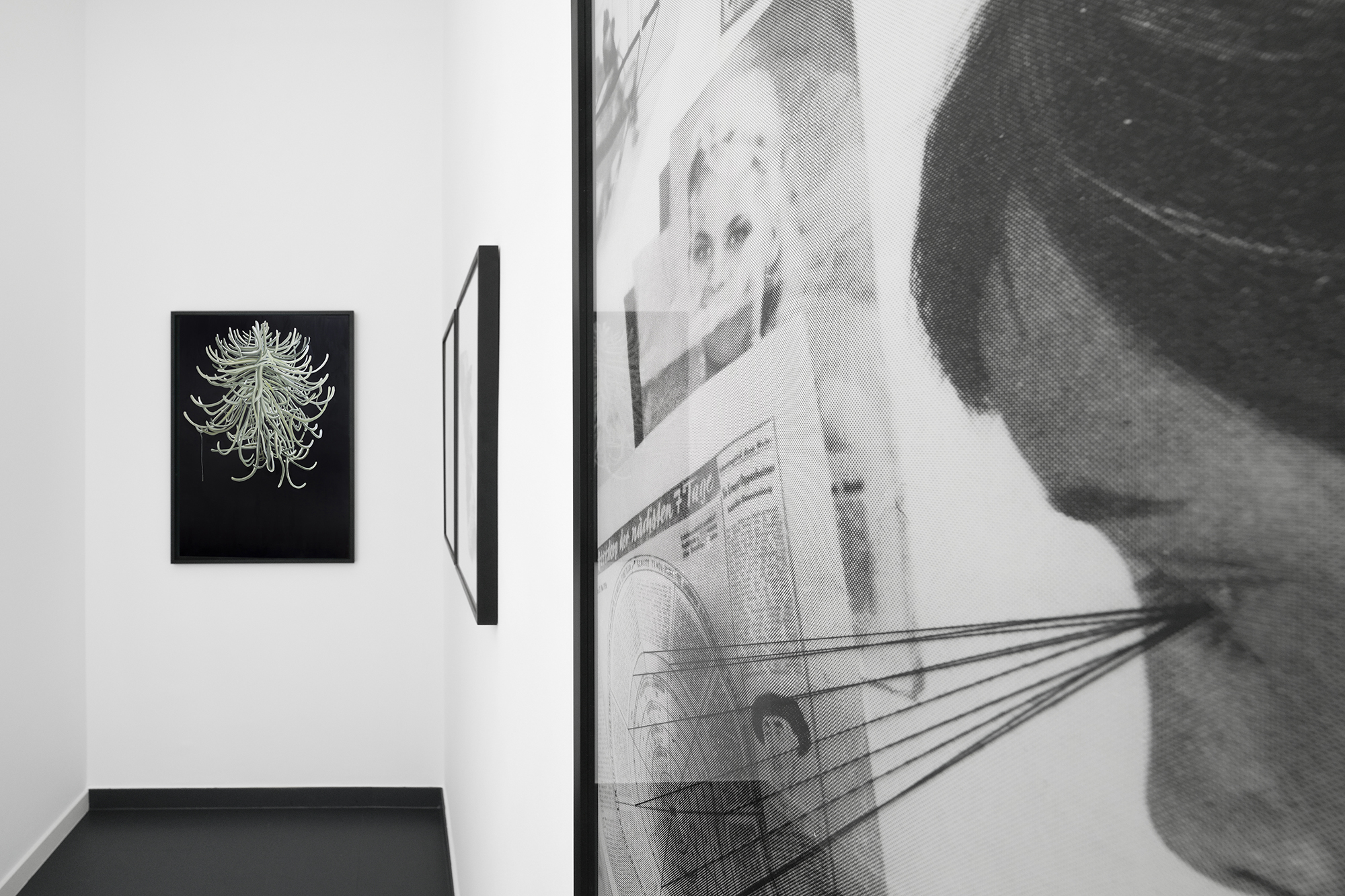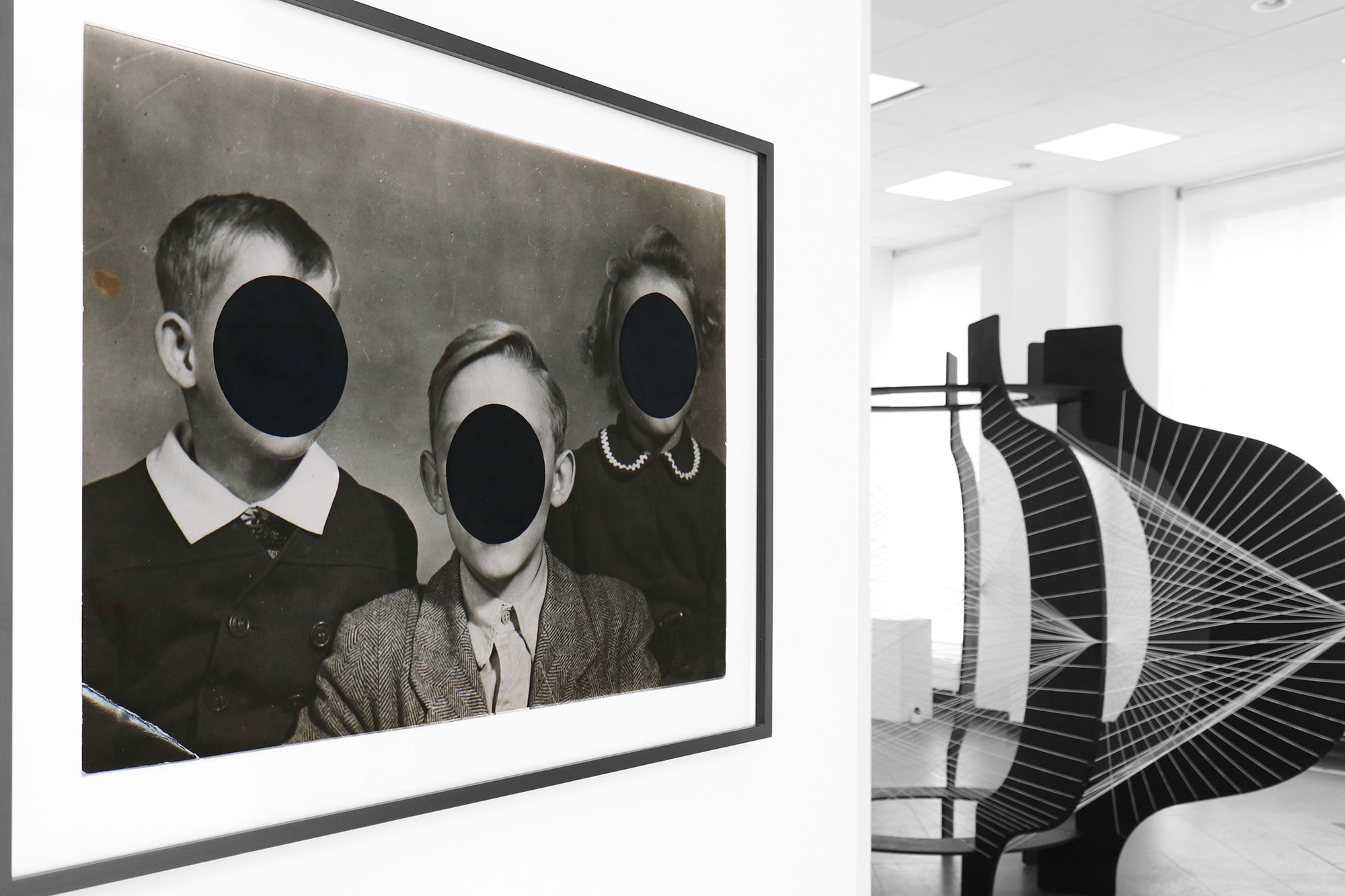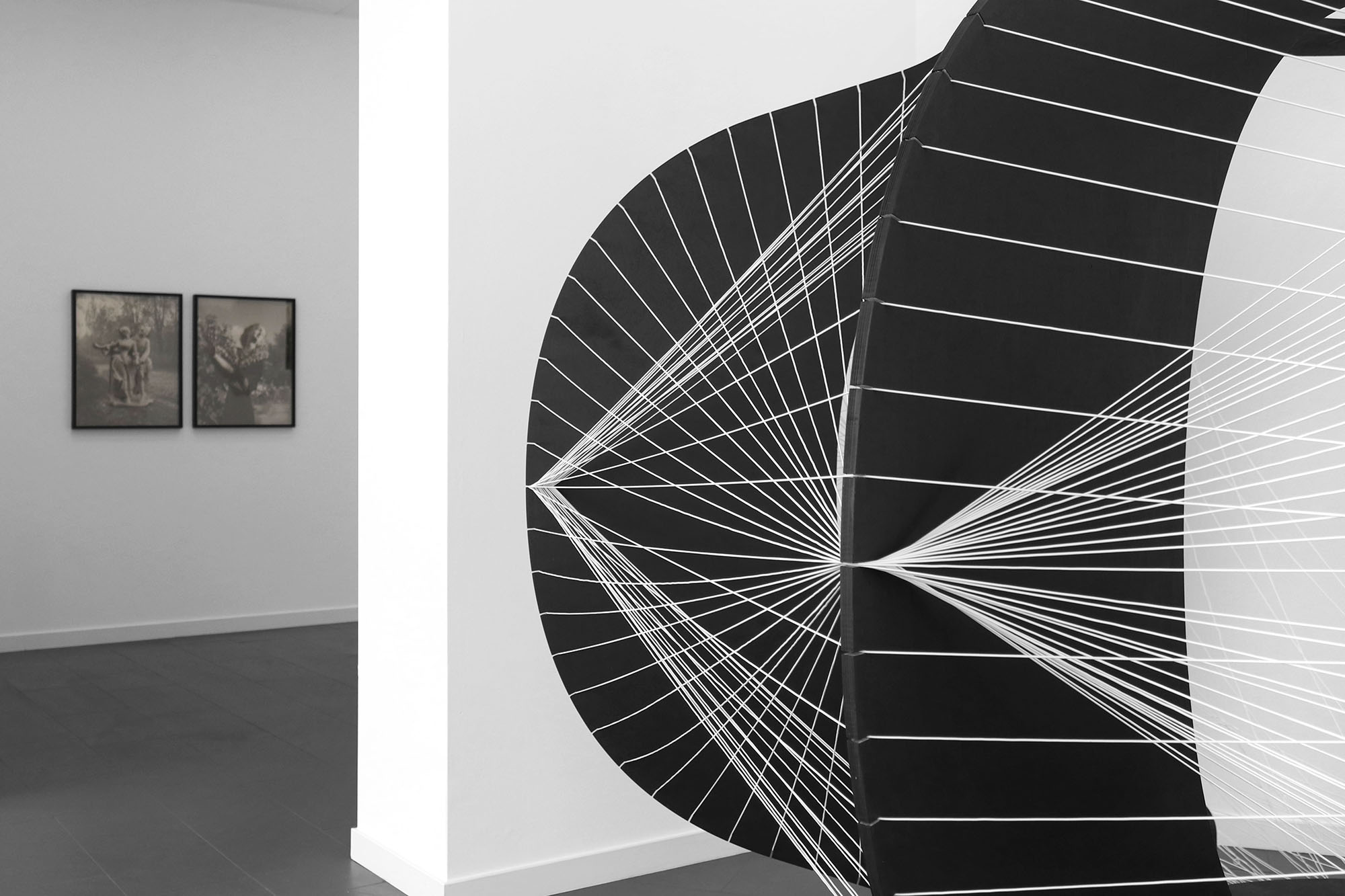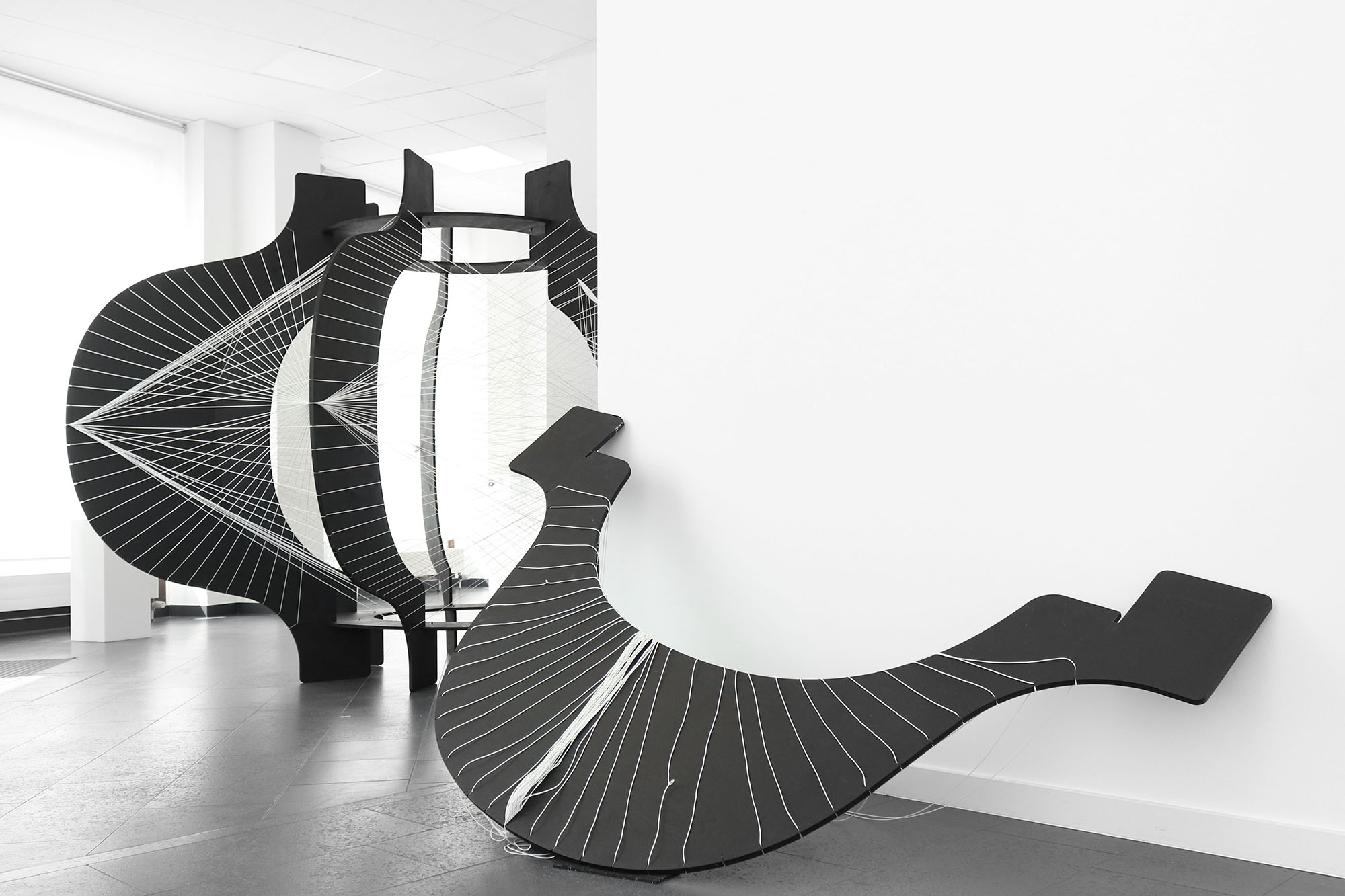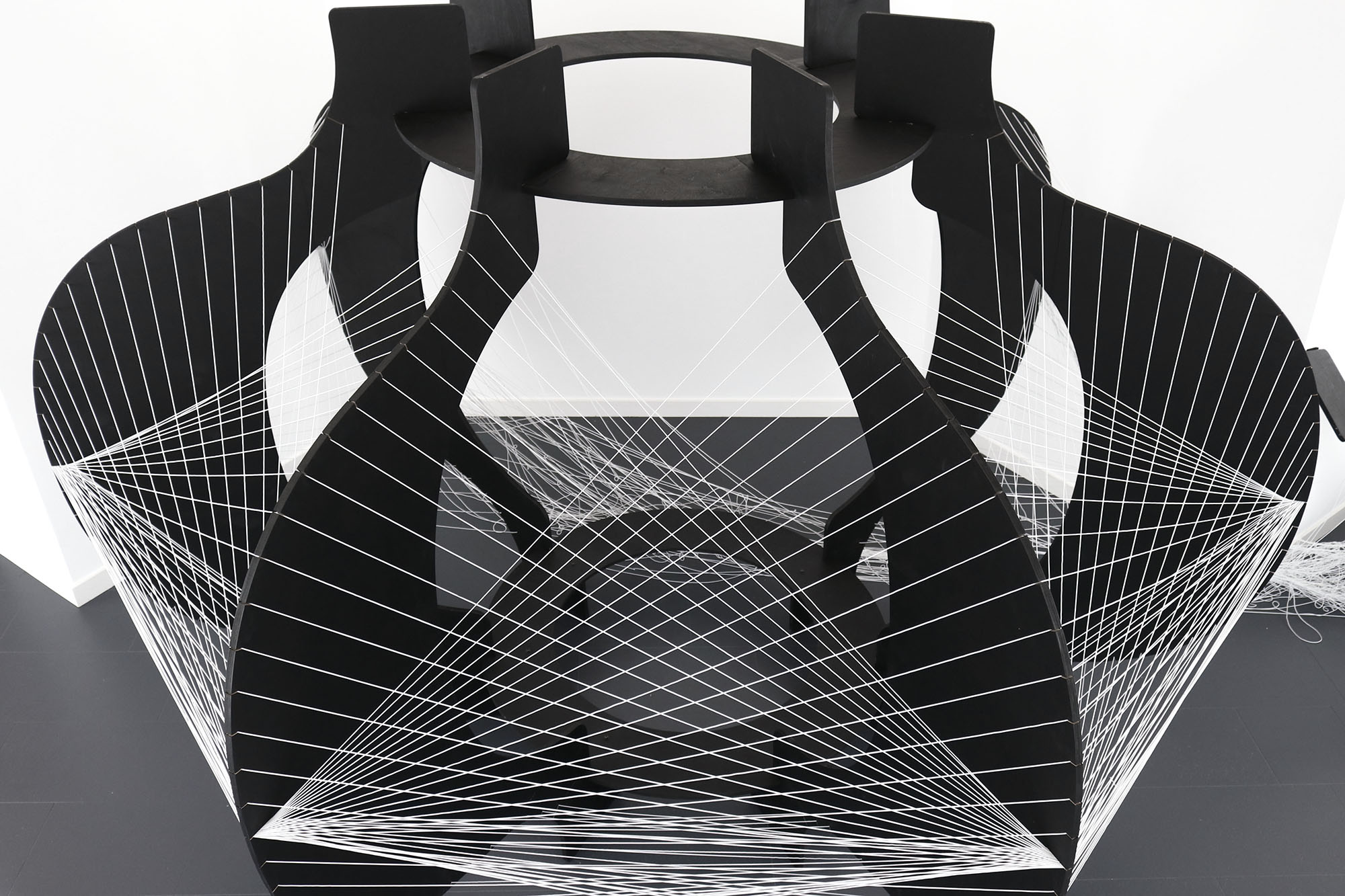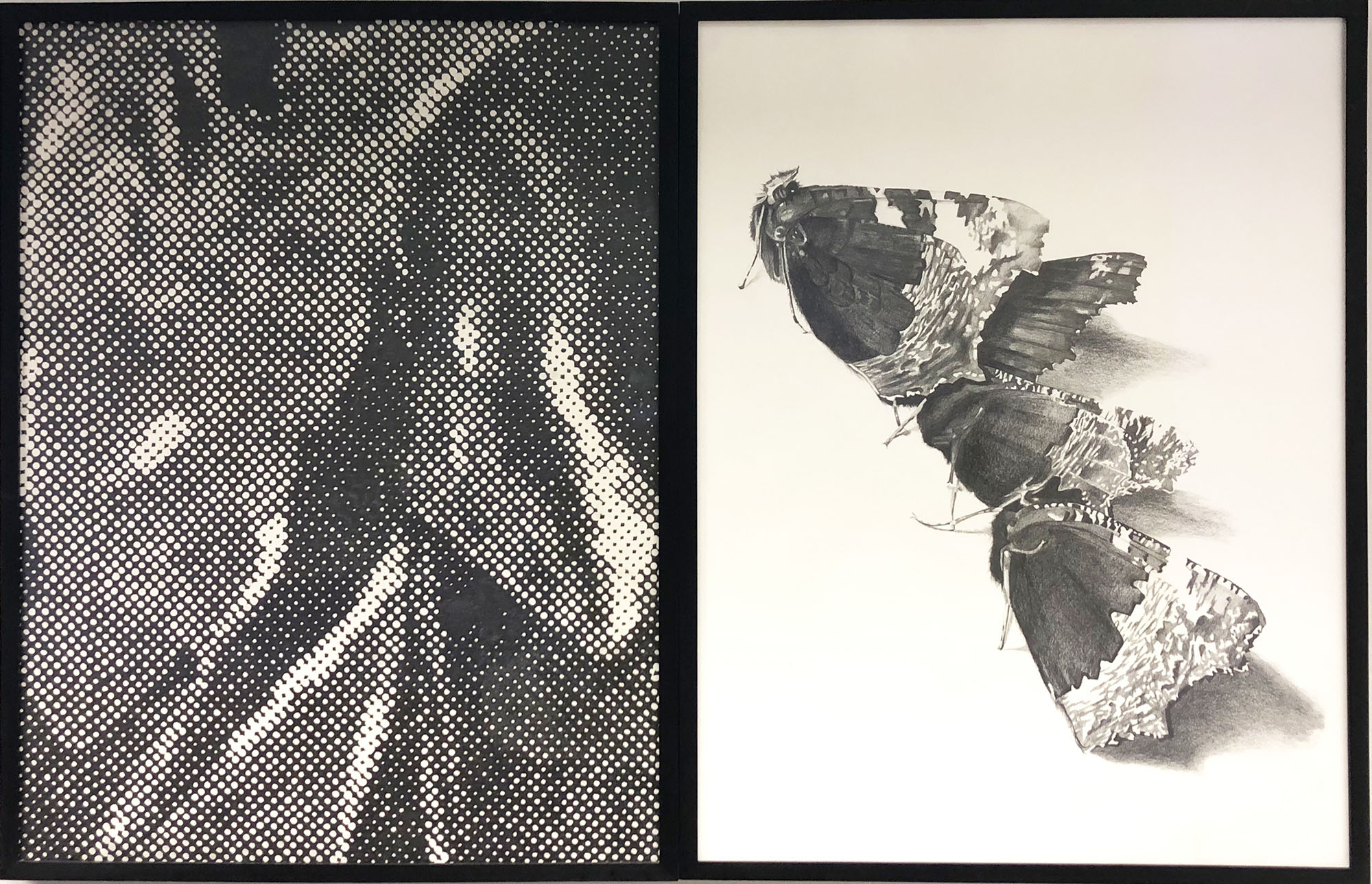Expectations
Alexandra Baumgartner
April 11th – May 27th 2022
Expectation is directed towards an event in the future and thus expectation is also the uncertain, something that cannot be fully controlled. Through change, Alexandra Baumgartner purposefully breaks expectations, such as changing proportions.
The installation The Unknown is the
centerpiece of her solo exhibition. For this, the form of a lamp from the 70s
was adapted and enlarged to fill the room on a scale of 1:10. Completely
stripped off its function, the form becomes an empty shell of itself and thus an
unknown object. The enlargement of the proportions creates a surreal,
constricting spatial situation. The parlor lamp as a symbol of cozy living,
which illuminates sweet home as a supposed place of safety and security,
becomes a trap in this larger-than-life format: tensions and shadows shift
reality and fiction. The human being is displaced by this occupation of space.
Alexandra Baumgartner's works are based on found objects and photographs, which are altered by interventions and placed in a new context.
Like a surgeon, Baumgartner relentlessly dissects her found material. She leaves out objects, she erases people, or rips her subject from its complete environment as we see in Kosmos or Analogie. She also does not shy away from doubling and superimposing (Vanitas, Distance, Expectation I-II) in order to reinforce a pictorial language that is disturbing to the viewer. Even simple juxtapositions (Distance) become strange objects in Baumgarnter's work, carrying an uncanny atmosphere.
What is actually strange about Alexandra Baumgartner's works, however, is the mere fact that they are beyond our quick interpretation. Even the titles of her paintings do not reveal anything revealing. The Vienna-based artist deliberately keeps the viewer alone with the ambiguity of her works, sometimes, almost ironically, by choosing a highly reflective framework, as in Absence, that allows the viewer to become part of the artwork. A question as to what might have happened here, where the person has gone, since all that can be seen is their empty shell of clothing, like a sculpture, raises expectations of explanations that remain unanswered. The work petrifies in an inexplicable moment that the viewer must endure, irritating as it might be.
Sculptures as placeholders, fragments stacked on top of each other over once-real people and scenes of everyday life, persons frozen as sculptures, behind them the real person, now no longer visible (Expectation I, II), the make-up proves to be decay, like a mirror image, in anticipation of one's own transience (Vanitas), a portrait collaged into a reclining girl's body, beings layered on top of one another, symbiotic like the two butterflies, fragile and transient (Distance).
Baumgartner's themes cannot be decoded by passing by. She does not spare her audience at all. Riddles without solutions are in the air. This exhibition is deeply touching and, in its lack of support, such an engaging stimulus to question one's own expectations in general and to train oneself to deal with ambiguity.

